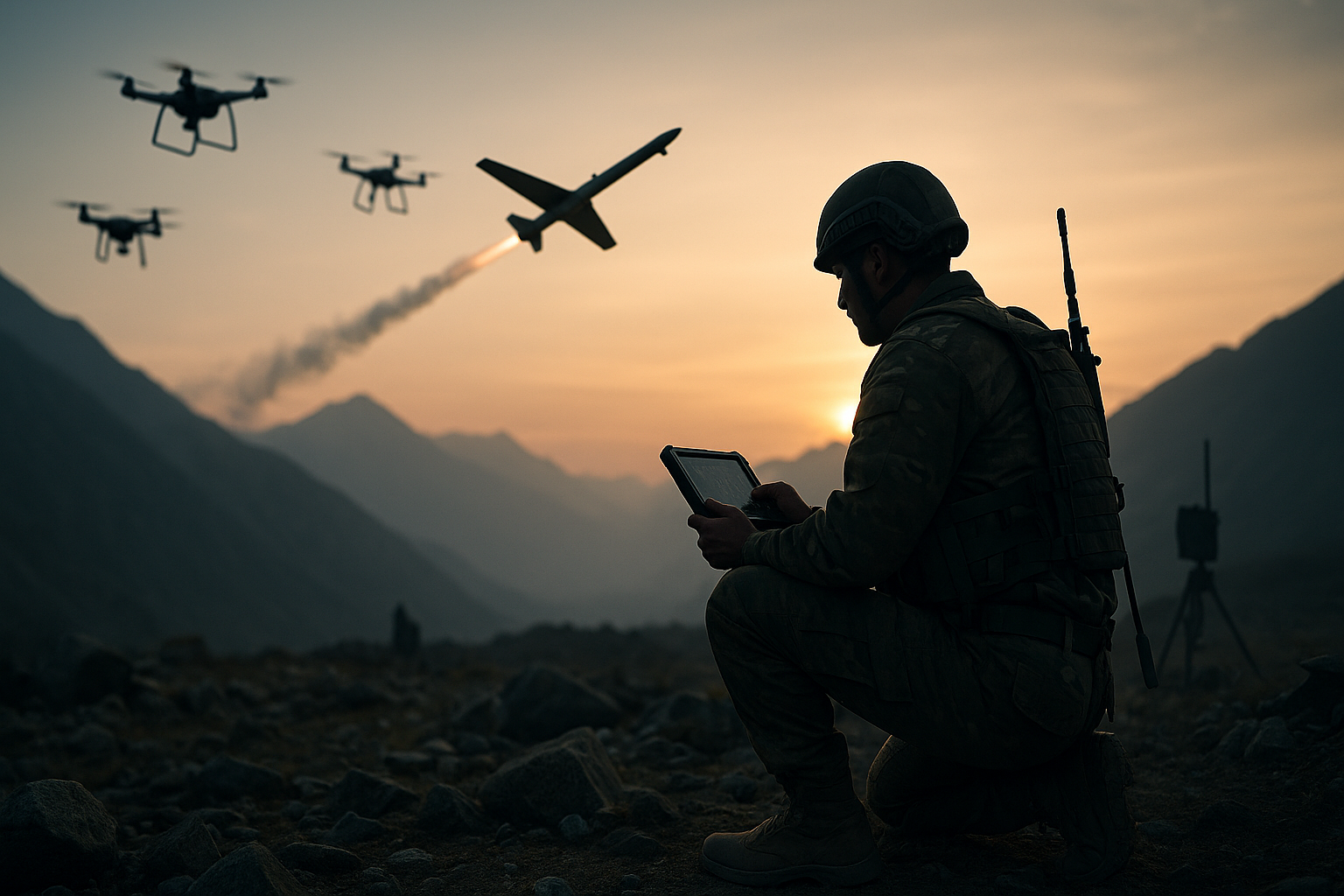When India’s Chief of Defence Staff (CDS) recently warned of a “third revolution” in warfare — the age of drones and counter-drone systems — it was not a metaphor.
From Ukraine to Gaza, the decisive fights today unfold not at 30,000 feet but barely 300 metres above the ground. The soldier’s sky — the 0–3,000-metre layer — is now the battlefield of quadcopters, loitering munitions, and counter-UAV systems. And controlling this airspace is no longer a luxury; it’s a condition for survival.
For the Indian Army, this shift has been both rapid and hard-learned. From Operation Sindoor to Eastern Ladakh to routine counter-infiltration operations along the Line of Control (LoC), drones have redefined what “contact” means.
Surveillance is constant, threats are airborne, and the response time is measured in seconds. As the Army modernises under the joint warfighting reforms pushed by the CDS, the need to secure the soldier’s airspace is emerging as a doctrinal imperative, not just a procurement priority.
The Third Revolution: A Warning, Not a Prediction
The CDS’s reference to the “third revolution” — following gunpowder and nuclear power — is rooted in the realisation that unmanned systems have blurred the line between tactical and strategic warfare. Drones now carry out reconnaissance, strike missions, and electronic warfare at the platoon level.
In this environment, the challenge is twofold: ensuring constant air situational awareness in the tactical bubble, and creating a command architecture where ground forces can make split-second shoot/no shoot decisions.
Unlike aircraft or artillery, drones multiply fast and operate in swarms. Countering them requires instant authorisation and distributed control, which only the field commander can exercise.
That’s why, for the 0–3,000-metre band, the Army must remain the controlling authority. Jointness does not mean centralisation; it means coordination with autonomy. Tactical skies must remain soldier-controlled.
Nagastra-1R and the Return of the Loitering Edge
The Army’s recent order for nearly 450 Nagastra-1R loitering munitions, developed by Solar Industries under the “Make in India” category, signals this understanding in action.
Compact, man-portable, and GPS-independent, these drones can deliver precision strikes on enemy positions, light vehicles, and logistics nodes: exactly the kind of assets that dominate high-altitude warfare in Ladakh or Arunachal.
Operation Sindoor reportedly underscored the value of such systems. In the high Himalayas, where artillery elevation and line-of-sight limitations constrain kinetic options, loitering munitions offered a cost-effective and low-risk strike alternative. Drones became not just eyes in the sky but also precision hands for the infantry commander.
But every advantage comes with a counter. The same skies now host enemy quadcopters dropping grenades or mapping forward defences. The soldier’s sky is crowded and vulnerable.
Lessons from Failures: FPV Tenders and QA Gaps
The Army’s recent cancellation of tenders for First-Person View (FPV) drones, after multiple vendors failed to meet quality assurance (QA) benchmarks, reveals the fragility of India’s emerging drone ecosystem. While domestic production is rising, standardisation, ruggedisation, and electronic hardening lag behind.
Unlike civilian drones, military systems must operate in electromagnetic chaos: jamming, spoofing, or loss of GPS signals are routine. Without hardened communications and robust testing, FPV drones are liabilities, not assets.
The takeaway from these cancellations is strategic: quantity without reliability can choke the battlefield network. For the soldier on the ground, drone reliability is equivalent to trust — and trust must be earned, not assumed.
Kill Boxes, UAS Lanes, and the New Air Discipline
Managing drone operations in a dense tactical zone requires a new form of discipline: airspace deconfliction at brigade and divisional levels. The creation of “kill boxes” and “UAS lanes” for unmanned operations ensures that offensive and defensive drones don’t interfere or trigger fratricide.
Just as artillery fire plans are synchronised at the brigade level, UAS corridors must be approved and monitored by the same headquarters. This will also facilitate seamless integration with air defence assets like Akash, Akashteer, and IACCS (Integrated Air Command and Control System), ensuring that Army-controlled drones aren’t misidentified by IAF radars or electronic warfare systems.
The solution lies in Joint Air Defence Command (JADC) protocols: harmonising data sharing, yet keeping tactical control decentralised. Ground commanders must see what flies over their sectors, and they must be able to decide whether to engage it.
Soldier-Centric Skies
Theatre commands, when operational, will depend on these tactical skies being predictable and secure. The Army’s push to establish integrated drone wings, counter-UAV units, and AI-based command networks like Akashteer is, therefore, the real frontier of joint warfare.
The lesson from every modern conflict — Ukraine, Nagorno-Karabakh, or Gaza — is identical: he who owns the low sky owns the battlefield. For India, that means ensuring that from 0 to 3,000 metres, command rests with the boots on the ground, backed by joint networks but driven by tactical need.
Because in the age of drones, the sky no longer belongs to pilots. It belongs to soldiers who can see, decide, and act — faster than the enemy can fly.

